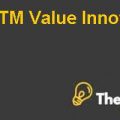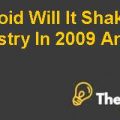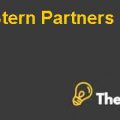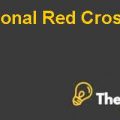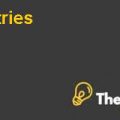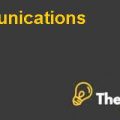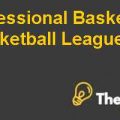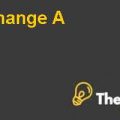BOSTON CREAMERY, Inc. Case Solution
Recommendation for 1974
Based on the variance analysis provided for 1974 I would have advised them to improve on the following areas:
1. Base their planning volume on realistic approach rather than following naïve approach, the difference of around 250000 gallons is a significant gap and this needs to be fulfilled with the proper research and research attained formula. Lack of market knowledge and research provoked them to short count the market size by 740000, this too is a significant number.
2. Operational estimates were also second-rated. The 46000 unfavorable variance indicates that the prices they agreed on for their operations were also underestimated. This may be because they used a naïve approach to forecast everything. As I said earlier this approach is not productive rather it’s destructive and gives birth to all the drawbacks that are present in this process.
3. The overall favorable variance too is not worthy of applause. One reason for this is that because of their fallacious quantity. Underestimating the revenues is the major reason for this positive result. Although, it is justified by stating a simple fact that it is the first time the company is adopting such measures, it is not justifiable. Improvement is needed in this area.
4. Along with the above mentioned tactics the company would also need to adjust the changes it made in 1973. One change is in the advertisement estimates which was changed from .06$ per gallon sold to 6% of sales. The second change being in the labor, both delivery and carbonizing and freezing.
5. Comparing the actual expenses with flexible budget gives us immense insight of the problem. Since they were using previous year’s exact data, they overestimated most of their expenses, namely: supplies, flavoring, additives and plastic wrap. While they also underestimated some of their expenses namely: sugar, cartons and dairy ingredients.
All these changes should be taken into account when preparing next year’s profit plan and control if they want to succeed in it without wasting time and efforts.
Drawbacks of Profit Planning and Control
No company should be a slave of its own profit forecasts. This should only be used as a guide to get an idea of the cost and accounting of a company. Although, this guide can be very misleading when there is a poor organizational control etc. Some of the drawbacks of profit planning and control are discussed below:
Inaccuracy
When preparing a budget, assumptions needs to be considered in order to get the result. For example, revenue is predominantly calculated on the basis of assumption. The problem is if there are radical changes in the economy, technology or even the assumptions, the results will vary significantly. This would lead to deceptive results and therefore misleading interpretations. Thus, the objective of the profit planning would not be reached.
Time Consuming
This requires time, effort and discipline. For a company, as in this case study, which has just begun to follow “profit planning and control” would find it extremely time consuming, since employees and staff/management would not be accustomed to it. Even in a situation where there is a poorly organized environment, many revisions of the analysis would be required that too in changing conditions, this would make the whole process more time consuming and would require more efforts.
Blame Game
Once the output of profit planning is received and discussed amongst the management, there maybe be conflicts that arise. Managers would blame managers of other department to safeguard their reputation. For example, if the production cost is high, the production manager can blame the procurement manager for the expensive raw material or its irregular delivery. This would create conflicts in the organization and would leave a negative mark.
Wastage of Resources
This is also a major drawback of profit planning and control that a budget is allocated to each department. The managers can make unwanted purchases just to fulfill the budget he has allocated. This gives fraudulent powers to the manager, hence corrupting the company and its environment as a whole.
Deceptive figures
The person in charge of the whole process may try to deceive the management. He may use a more conservative approach when estimating the revenues while estimating expenses in a much unbolted manner. This would make him look good once the results are out, since revenues would definitely be greater while expenses may increase.
No Guarantees
As discussed above, a forecast should only be created to seek advice from. There is no guarantee that it would be the same as budgeted. The uncertainty strikes when we are unaware so we should be prepared to deal with such drastic situation. ........
This is just a sample partical work. Please place the order on the website to get your own originally done case solution.

